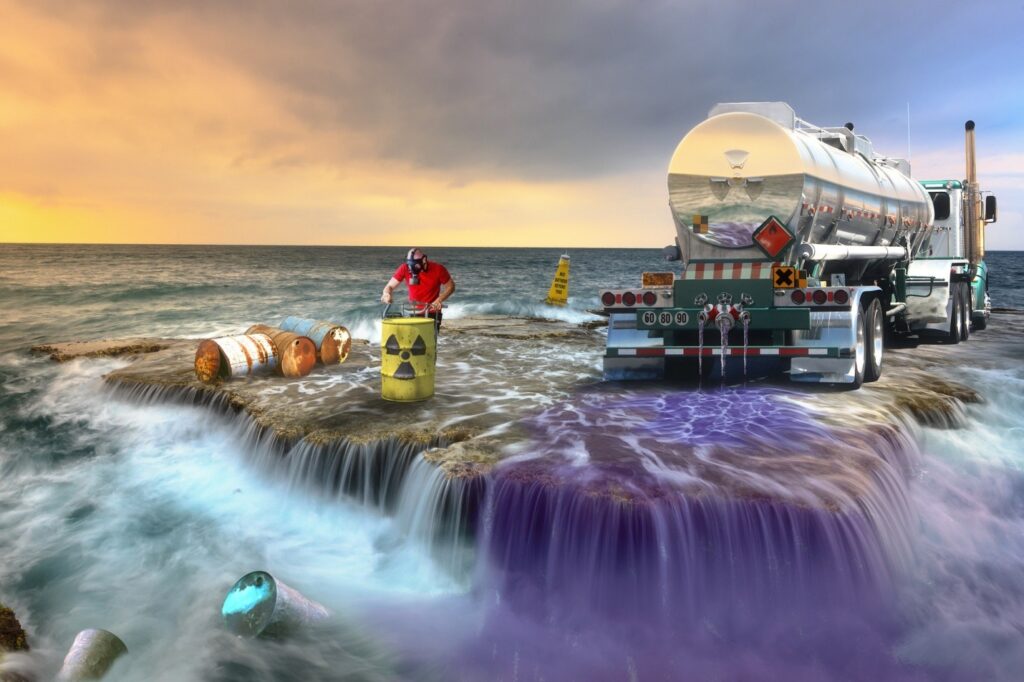Everything about Reclaim Waste
Everything about Reclaim Waste
Blog Article
Unknown Facts About Reclaim Waste
Table of ContentsNot known Facts About Reclaim WasteReclaim Waste - The FactsA Biased View of Reclaim WasteReclaim Waste Can Be Fun For AnyoneThe Definitive Guide for Reclaim Waste
Check out the types, occurrences, and types of fluid waste. Domestic sewer waste describes the waste and items from a household septic container. This type of waste is created by people in homes, schools, and various other buildings. This only consists of septic containers that have a drain area. The correct administration and disposal of residential sewer waste call for liquid waste to be transferred to a sewage treatment plant where the appropriate methods and tools are related to cleanse and throw away waste.
Business waste often consists of prospective hazards, such as flammable materials or a mixture of fluid and solid waste products, and requires an advanced and detailed disposal process. The disposal of business waste normally includes the filtration of waste before transport to guarantee risk-free and appropriate disposal. Hazardous waste is created from results and runoff of commercial processes and manufacturing.
This type of waste can not make use of the very same sewage monitoring transportation or procedures as septic or industrial liquids. The commercial waste management procedure requires the assessment and testing of fluid waste prior to it undertakes the disposal procedure (liquid waste disposal). Runoff waste is the liquid waste that comes from overflow and excess stormwater in extremely booming areas or cities
Runoff waste can trigger contamination and flooding if not handled appropriately. Discover extra concerning sewer cleansing and waste management. Ensuring correct waste monitoring can stop catastrophes and lower ecological damage. Both people in residential setups and experts in commercial or manufacturing markets can gain from understanding the processes and laws of liquid waste administration.
How Reclaim Waste can Save You Time, Stress, and Money.
Contact PROS Services today to learn more about our waste monitoring and disposal solutions and the appropriate means to take care of the liquid waste you produce.
(https://www.intensedebate.com/people/reclaimwaste1)This supposed 'wastewater' is not only an essential resource yet, after treatment, will be launched to our land, waterways or the sea. Used water from toilets, showers, baths, kitchen sinks, laundries and industrial procedures is understood as wastewater.

water used to cool down equipment or tidy plant and equipment). Stormwater, a kind of wastewater, is drainage that flows from farming and city locations such as roofings, parks, yards, roadways, paths and seamless gutters into stormwater drains pipes, after rain. Stormwater flows untreated directly to local creeks or rivers, at some point getting to the ocean.
The 6-Minute Rule for Reclaim Waste
In Queensland, most wastewater is dealt with at sewer treatment plants. Wastewater is transferred from residential or industrial websites through a system of sewage systems and pump terminals, known as sewage reticulation, to a sewage therapy plant.
The Department of Natural Resources suggests regional federal governments concerning handling, operating and maintaining sewerage systems and treatment plants. In unsewered locations, city governments may need householders to install private or household sewer therapy systems to deal with domestic wastewater from bathrooms, cooking areas, washrooms and washings. The Department of Natural Resources authorizes the use of household systems when they are confirmed to be efficient.
Most stormwater gets no therapy. In some new subdivisions, therapy of some stormwater to eliminate clutter, sand and gravel has started making use of gross pollutant catches. Wastewater therapy takes place in four phases: Eliminates strong issue. Bigger solids, such as plastics and other things mistakenly discharged to drains, are eliminated when wastewater is travelled through displays.
Wastewater after that moves into huge containers where solids settle and are eliminated as sludge. Oil and scum are skimmed from the surface. Utilizes little living organisms understands as micro-organisms to break down and get rid of remaining liquified wastes and fine particles. Micro-organisms and wastes are incorporated in the sludge. Eliminates nitrogen investigate this site and phosphorus nutrients that might cause algal blooms in our waterways and endanger aquatic life.
All about Reclaim Waste
Nutrient removal is not offered in any way sewage therapy plants since it needs costly specialized tools. It is coming to be much more usual in Queensland. Clear liquid effluent created after therapy may still contain disease-causing micro-organisms. If this effluent is released right into rivers such as rivers or the sea, the micro-organisms will eventually pass away out.

A lot of wastewater flows into the sewerage system. Under the Act, neighborhood federal governments administer authorizations and permits for eco relevant activities (Ages) including wastewater releases that could have a neighborhood effect.
The 7-Second Trick For Reclaim Waste
Otherwise, examples are considered research laboratory evaluation. Usually numerous examinations are needed to establish the levels of each of the different pollutants such as oils, hefty metals and chemicals in water. Surveillance provides factual information regarding water high quality and can verify that permit conditions are being satisfied. The info obtained through surveillance gives the basis for making water top quality choices.
Report this page